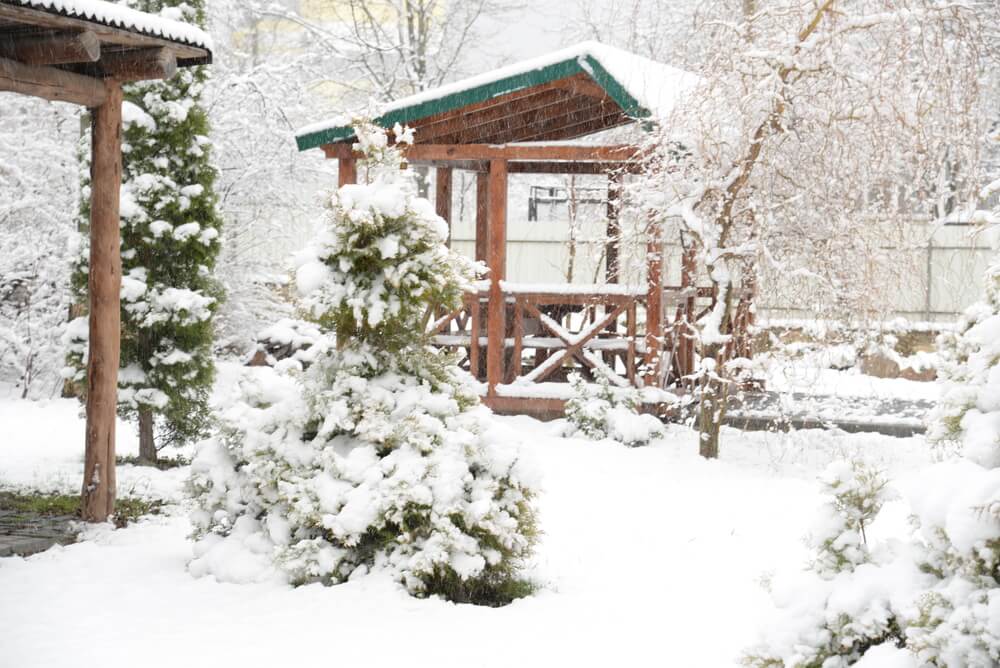
In almost all climates, owning an outdoor kitchen means you’ll have to take some sort of winterization steps to get the space prepared for the colder months. But, what if you live in an area with extremely cold winters? Is it practical to have an outdoor kitchen installed in regions that endure severe winter weather?
Maybe you’ve considered putting in an outdoor kitchen to enjoy the warmth of the summer months, but you’re concerned about how it will hold up over the winter. However, you’ll be happy to learn that owning an outdoor kitchen isn’t just for those who live in warmer climates. Continue reading below as we discuss some specific suggestions for owning an outdoor kitchen in colder regions of the country.
Shelter the Area
If you shelter your outdoor kitchen area, you’ll be able to use certain elements of your outdoor kitchen year-round, like your grill. This will keep the area protected from rain and snow so you can continue accessing your outdoor kitchen even after the snow begins to fall.
You might want to invest in a high-quality grill cover even if you do plan on using the grill over the winter, which will help protect it from the elements and prevent any rusting.
Winterize the Plumbing
If you live in an area where the temperatures freeze, keep in mind that you’ll need to fully winterize plumbing elements like the sink or dishwasher to avoid any damage. So, you likely won’t be able to utilize all the elements of your outdoor kitchen in the winter, even if you do provide some sort of overhead protection from an awning or pergola.
Before the first freeze of the year, make sure to shut off the water supply to the outdoor sinks and disconnect any hoses. This will prevent your plumbing from freezing and creating any cracks that will need to be repaired or replaced come springtime.
If you have a fridge in your outdoor kitchen, look into winterization kits that allow you to continue using it throughout the winter and follow the guidelines provided in the owner’s manual for best results.
Add a Heating Element
It can be more enjoyable to use your outdoor kitchen in the winter if it’s well-heated. There are plenty of outdoor heating elements available, like a heat lamp or a fire pit, that can keep the area cozy and comfortable even as the temperatures plummet.
Depending on the weather conditions where you live, adding extra heating elements can make it just comfortable enough for you to cook in your outdoor kitchen, or it may be so cozy that you can continue entertaining guests outdoors all season long.
Use Durable Materials and Appliances
As you’re designing your outdoor kitchen, make sure to choose materials and appliances that can withstand winter conditions. Even if you plan to keep your outdoor kitchen covered, you should still anticipate some exposure to the elements.
In general, choosing durable appliances, weather-resistant outdoor kitchen cabinets, and sturdy countertops will help you avoid any discoloration or warping after exposure to snow, sleet, and ice all winter.
If you plan on fully closing up your outdoor kitchen when the winter months roll around, make sure to cover up all cabinetry and countertops to provide better protection from the elements.
